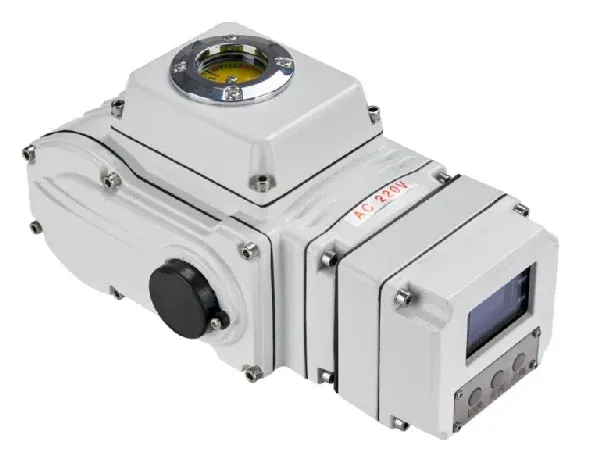Common Failures and Maintenance Practices for Electric Actuators
Common Failures and Maintenance Practices for Electric Actuators
Introduction We are a leading control valve manufacturer in China, delivering high-quality valves and control actuators designed to meet a wide range of industrial applications.
Electric actuators are vital components in modern automation, designed to convert electrical energy into mechanical motion—either linear or rotary. These devices automate valve and damper operations, improving process efficiency and enabling sophisticated control strategies. Their design and functionality vary depending on the specific application, with considerations for size, motion type, and environmental requirements.
The rising demand for electric actuators is driven by the increasing decentralization of automation systems. Today’s advanced electric actuators often come equipped with integrated process controllers, facilitating compliance with modern automation standards. Many also feature failsafe systems, allowing continued operation or safe shutdown during power outages—significantly enhancing system reliability and safety.
Despite their technological advancements, electric actuators can still experience failures. Understanding these common issues and following effective maintenance practices are essential for ensuring long-term performance and avoiding costly downtime. This article explores the typical failures found in electric actuators and offers practical maintenance strategies to mitigate them.
Common Failures in Electric Actuators
1. Motor Malfunction Motor failure is among the most frequent problems in electric actuators. Extended use or operation under excessive load can cause the motor to overheat, increasing rotor clearance and producing vibrations that eventually lead to a loss of torque and operational failure.
Handling Method: Inspect the motor's power circuit and all connection points. If the motor is irreparably damaged, replace it to restore normal operation.
2. Power Failure Power-related issues, including line disruptions, faulty contacts, or triggered protective circuits, can interrupt actuator performance and cause downtime.
Handling Method: Check for short circuits, open circuits, or contact failure in the power lines. Clean contact surfaces and reset any protective devices that may have been tripped.
3. Transmission Component Malfunction Wear and tear of mechanical transmission parts—such as hoses, linkages, or couplings—can lead to breakdowns or erratic motion.
Handling Method: Disassemble the actuator to examine transmission parts. Replace or repair any damaged or loose components to restore mechanical integrity.
4. Mechanical Failures Mechanical failures may arise from internal part damage or excessive external vibrations. These issues often require a full system diagnosis.
Handling Method: Conduct a thorough inspection to determine the source of the failure. Use appropriate tools to repair or replace defective parts and ensure structural stability.
5. Indicator Light Failure Non-functioning indicator lights or signal feedback issues may stem from blown fuses or faulty power delivery to the servo board.
Handling Method: Check the status of the fuses and power supply to the indicator lights. Replace damaged fuses or indicators as needed.
6. Resistance and Capacitance Faults Inoperability after startup may be caused by defective resistors or capacitors, which are crucial to the actuator’s electronic circuit performance.
Handling Method: Use diagnostic tools to test these components. Replace any that fail to meet performance specifications.
Maintenance Strategies for Electric Actuators
1. Routine Inspections Regularly inspect all actuator components—motors, gear assemblies, linkages, and electrical connections—for wear, corrosion, or physical damage.
2. Lubrication Apply appropriate lubricants to moving parts at intervals recommended by the manufacturer to minimize friction and extend mechanical life.
3. Cleaning Maintain cleanliness around the actuator. Prevent dust, moisture, or debris from entering the housing, especially around electrical connectors.
4. Temperature Monitoring Monitor the operating temperature to avoid overheating. Ensure ambient and internal temperatures remain within specified limits.
5. Electrical Testing Periodically test resistors, capacitors, and fuses. Replace any degraded components to avoid sudden failure.
6. Calibration Recalibrate actuators at regular intervals to maintain accurate positioning and operational performance, especially in precision-critical applications.
7. Software Updates If using actuators with programmable controls, ensure firmware or software is current. Updates often fix bugs and improve performance.
8. Operator Training Train all personnel on proper actuator operation, troubleshooting, and maintenance protocols to reduce the risk of user-induced failure.
9. Documentation Keep detailed maintenance logs, including inspection results, repairs, and part replacements. These records help track recurring issues and inform future decisions.
10. Emergency Preparedness Establish a contingency plan to handle unexpected failures. Include diagnostic procedures, spare part sourcing, and minimal downtime strategies.
Conclusion Electric actuators are indispensable in today's automated systems, providing precise, reliable control for a wide range of industrial applications. However, their effectiveness depends on proactive maintenance and an understanding of common failure modes.
By implementing thorough inspection routines, performing timely repairs, and keeping operators informed, businesses can extend actuator life, reduce operational risks, and improve process reliability. As automation systems grow increasingly complex, well-maintained electric actuators will remain essential for achieving efficiency, accuracy, and safety in industrial operations.Know more about Google SEO Directory